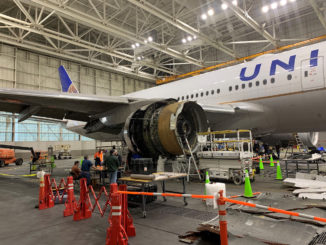
Report also criticises actions of pilot following the emergency
The National Transportation Safety Board (NTSB) released a news release yesterday about the 2015 engine fire at Las Vegas McCarran as it concludes that it was caused by a crack in the high-pressure compressor stage.
British Airways flight 2276, which was due to fly from Las Vegas to London Gatwick, suffered an uncontained engine failure and subsequent fire during take-off at Las Vegas McCarran Airport on the 8th September 2015. All passengers were safely evacuated from the aircraft which suffered significant damage to the engine, wing and hull.
According to the NTSB a fatigue crack in the high-pressure compressor stage 8 disk web caused the uncontained engine failure. The subsequent destruction of the engine section caused the main fuel supply line to separate fuelling a large fire.

The report also criticised the actions of the Pilot, Captain Chris Henkey.
According to the NTSB the captain ordered passengers to evacuate from the right side of the aircraft. But the engine on that side continued to run for 43 seconds after the evacuation order, This meant that two emergency slides were blown out of position and unusable for the evacuation.
The passengers and crew were able to use two of the eight doors to leave the 777 before smoke and fire encroached the fuselage.
The NTSB report says that the captain did not use his quick reference handbook (QRH) and it was only when a third pilot in the cockpit noticed the right engine was still running that the engine was shut down.
The NTSB says this happened “Because the captain did not follow standard procedures, his call for the evacuation checklist and the shutdown of the right engine were delayed,”.
The report goes on to say that the disk web was not an area that needed inspection as part of the maintenance schedule. If it had then the crack would have been picked up when the engine underwent maintenance in 2008.
Since the incident, GE has brought in inspection procedures designed to detect disk web cracks.




